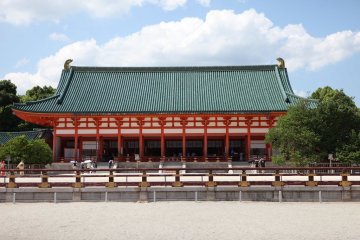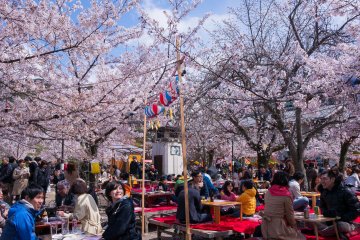

The National Museum of Modern Art, Kyoto, also known as MoMAK, is a short 6- to 10-minute walk from Higashiyama Station and houses an impressive collection of twentieth-century artwork from around Japan and the world, with a particular focus on Japanese-style paintings from Kyoto and the Kansai area. Admire paintings, prints, sculptures, ceramics, crafts, and photography.
The museum hosts five special and traveling exhibits every year and rotates the artwork displayed in the Collection Gallery about five times a year, making no two visits the same. The Collection Gallery also serves as a site for workshops and educational programs. On the first floor, you can enjoy a light snack at the museum’s cafe and peruse the museum shop.
MoMAK’s exterior itself is a work of art. Designed by Maki Fumihiko and completed in 1986, the unique combination of granite tiles and glass windows is an ode to the grid layout of Kyoto.
Kyoto's National Museum of Modern Art can be conveniently accessed by various public transport options.
If you're traveling from Kyoto Station, take Kyoto City Bus No. 5 headed towards Ginkakuji Temple Via Heian-jingu Shrine. Alight at the Okazaki Koen/Bijutsukan,Heian Jingu-mae stop.
If you're using the Kyoto subway network, head to Higashiyama Station (Tōzai Line) and the museum is around 10 minutes walk away.

The Heian Shrine is a Shinto shrine located in Sakyō-ku, Kyoto, Japan. The Shrine is ranked as a Beppyō Jinja by the Association of Shinto Shrines. It is listed as an important cultural property of Japan. [Wikipedia]

Maruyama Park is the oldest public park in Kyoto and a popular springtime cherry blossom viewing spot. It opened in 1886 and is located next to Yasaka Shrine in Higashiyama District. The park was laid out by the well-known gardening expert Ogawa Jibee (1860–1933). As it is one of the most popular places for hanami in Kyoto, it can get quite crowded during the high season in April. The main attraction of the park is a beautiful weeping cherry that is illuminated at night. In the southwest of the park is the Chorakukan Villa, which the Japanese tobacco king Murai Kichibee had built. This property is now used as a hotel.

The Yasaka Cry, located in the Gion district in Kyoto, is often referred to as the Gion Shrine. The shrine is one of the most famous shrines in the city of Kyoto and is located at the end of Shijo-dori Street. The grounds of the shrine include several buildings and gates. Including the main hall and also a stage. Every year, Yakasa Shrine hosts numerous events and festivals that are important to the Japanese and is a popular destination for many visitors to Kyoto City. The Yasaka Shrine respects the gods Susanoo-no-mikoto, Kushiinadahime-no-mikoto, and Yahashira-no-mikogami. Above all, Susanoo-no-mikoto is an important god in Japanese mythology, known for his victory over Yamata-no-orochi (a great serpent with eight heads: a symbol of numerous disasters).